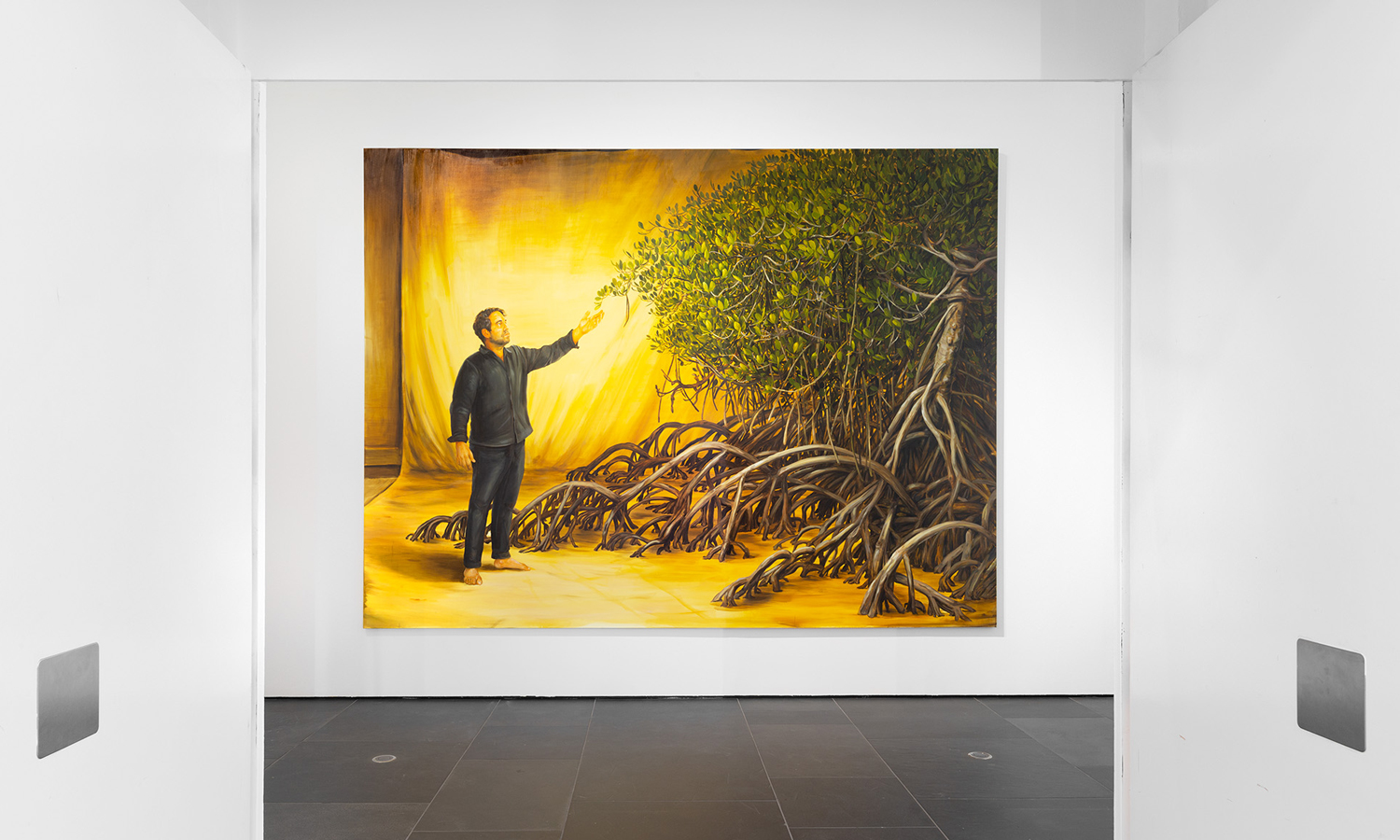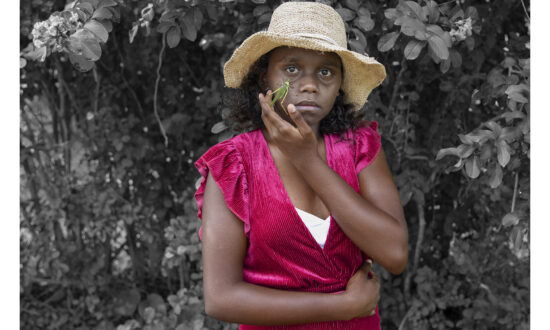18th Adelaide Biennial of Australian Art: Inner Sanctum
Art Gallery of South Australia
When the first Adelaide Biennial was presented in 1990, the lofty aim was to make an exhibition that was a “coherent visual / intellectual / emotional experience for the museum visitor”. In other words, the “ordinary” viewer was to be given priority over the art trade cohort such as gallerists, arts apparatchiks and the like.
Good luck with that, given the hermetic nature of much contemporary art preoccupations and language. But, as Inner Sanctum demonstrates, it is possible to strike a balance and invite a broad audience into the narrative.
Curator José Da Silva has been an experienced hand at the helm, backing up the reassuring promise of the exhibition’s theme of art as a refuge or sanctuary with a thoughtful balance of artistic temperaments centred on ways of staying connected with a sense of self, others and place.
There are a few distractions in the form of works located within the general collection hang, such as the large George Cooley canvases in the vestibule and early colonial gallery, and Seth Birchall’s “time of day” paintings located in the mid to later 20th-century confines of Gallery 6. Both sets of works are compelling – Cooley’s in his shoot-the-lights-out approach to capturing the colour and muscular heft of the remarkable country around the artist’s hometown of Coober Pedy, and Birchall’s for his finely calibrated reflections on country traversed and remembered.
Because Birchall’s works stylistically resemble mid-war Sydney modernist landscapes it may have been tempting to locate them near the Cossington Smiths. But one can understand the complexity and counterclaims of such choices whenever co-opting a collection hang to amplify the identity of traveller from another time.

Adelaide Biennial of Australian Art: Inner Sanctum installation view, featuring works by Seth Birchall. Photo: Saul Steed
Birchall’s images are internalised landscapes as much as observed. They have been described as “psychological and meditative portals”. If reading these landscape images in the context of, say, the Fred Williams paintings in the other corner, then it may be possible to experience them in a truer light than just poetic reveries.
But the Cooleys, blowing the Glovers off the wall – I’m not convinced it works as it is just too obvious. If room could have been found to locate them alongside one of the Japanese screen paintings in the basement gallery exhibition (Misty Mountain, Shiny Moon) that would have been something. But then the politics would have been different.
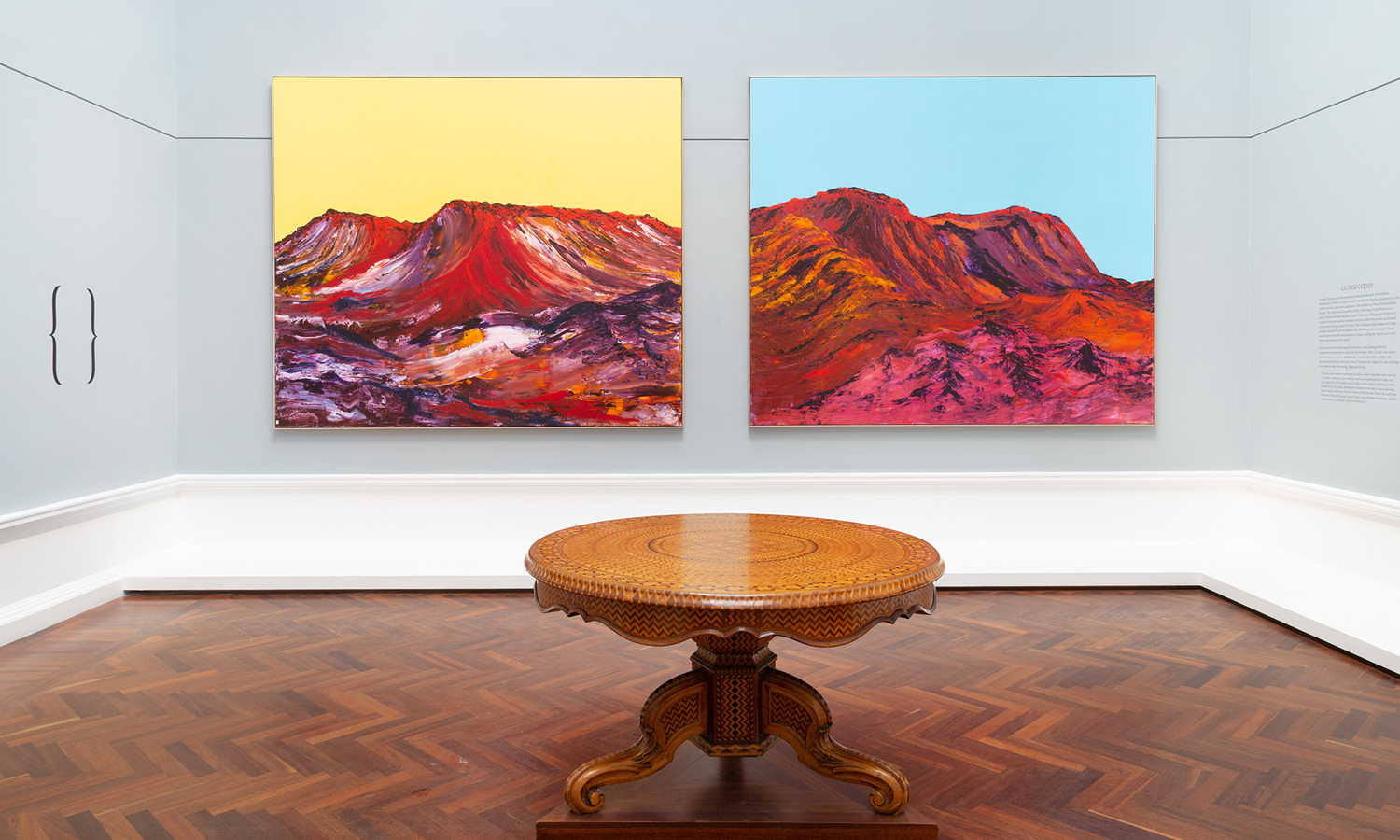
Adelaide Biennial of Australian Art: Inner Sanctum installation view, featuring works by George Cooley. Photo: Saul Steed
The location of Paul Knight’s Naked Souls in the later-19th-century room with its neoclassical figures and themes is inspired. This tech-industry cabinet with its screens tracing a conversation between lovers, anticipating the time when they can be together, makes for uncomfortable reading. It mimics eavesdropping on a private conversation which is forensic in its detailed description of physical intimacies. Might this be an intelligence sting transcript?
The truth, Scully, is out there when it is revealed that Peter and Paul are real persons. Some of the conversation is based on “real” exchanges; a personal archive of more than 170,000 words taken from text messages. Parallel to this is another body of text, sourced in part from a sci-fi novel (Aurora) then amalgamated with the aid of AI chatbots into a synthesised conversation between the two men. This is one work that sits uneasily within the overall thematic of sanctuary. From one perspective, these screen portals look like the gates of hell.
In a similar vein, the exhibition section titled A Quiet Spot is anything but. While not looking into the abyss, there is ambiguity or mixed messages in a number of works. Jacobus Capone’s video installation Forewarning (Act 1) is described as a “tense and alarming acknowledgement of climate change and humanity’s imprint on nature”. If nails scratching chalkboard is not your thing be prepared for a hunting knife dragged across a glacier face at full decibels. Perhaps it was a quiet spot until knife-wielding artists, and humanity in general, turned up.
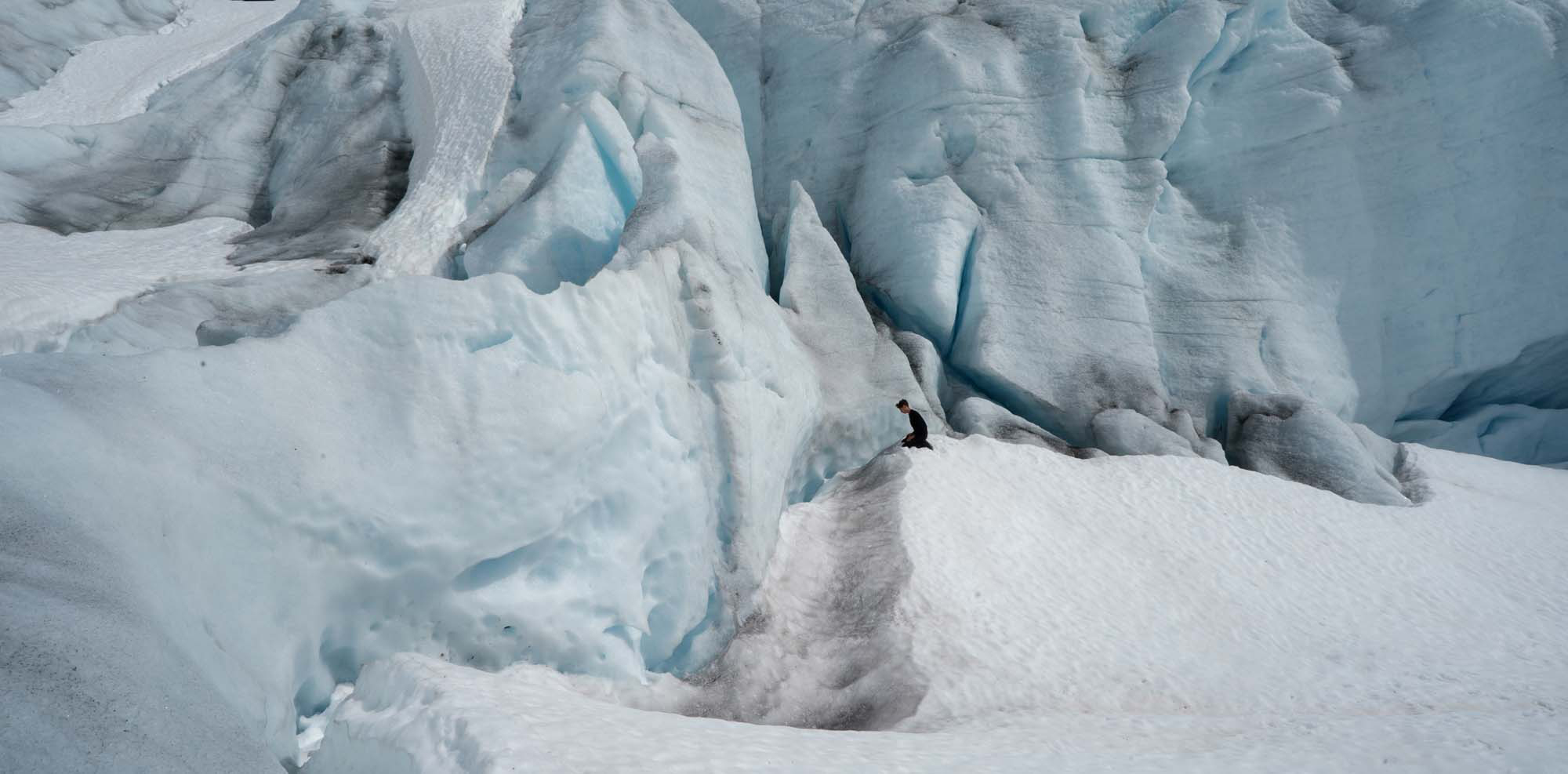
A still from Forewarning (Act 4: Demarcation), Jacobus Capone’s two-channel synchronised HD video; courtesy of the artist and Moore Contemporary, Perth. © Jacobus Capone
Lillian O’Neil’s large-format collages considering ideas about self, within the context of motherhood, might be considered companion pieces to Capone’s howl in the wilderness. Her world of experience and moon-musing through the night is defined by fragmentation involving manipulation of details sourced from found books and magazines. The catalogue essay paints a larger context but these somber images need little support in expressing a drifting in and out of altered states.
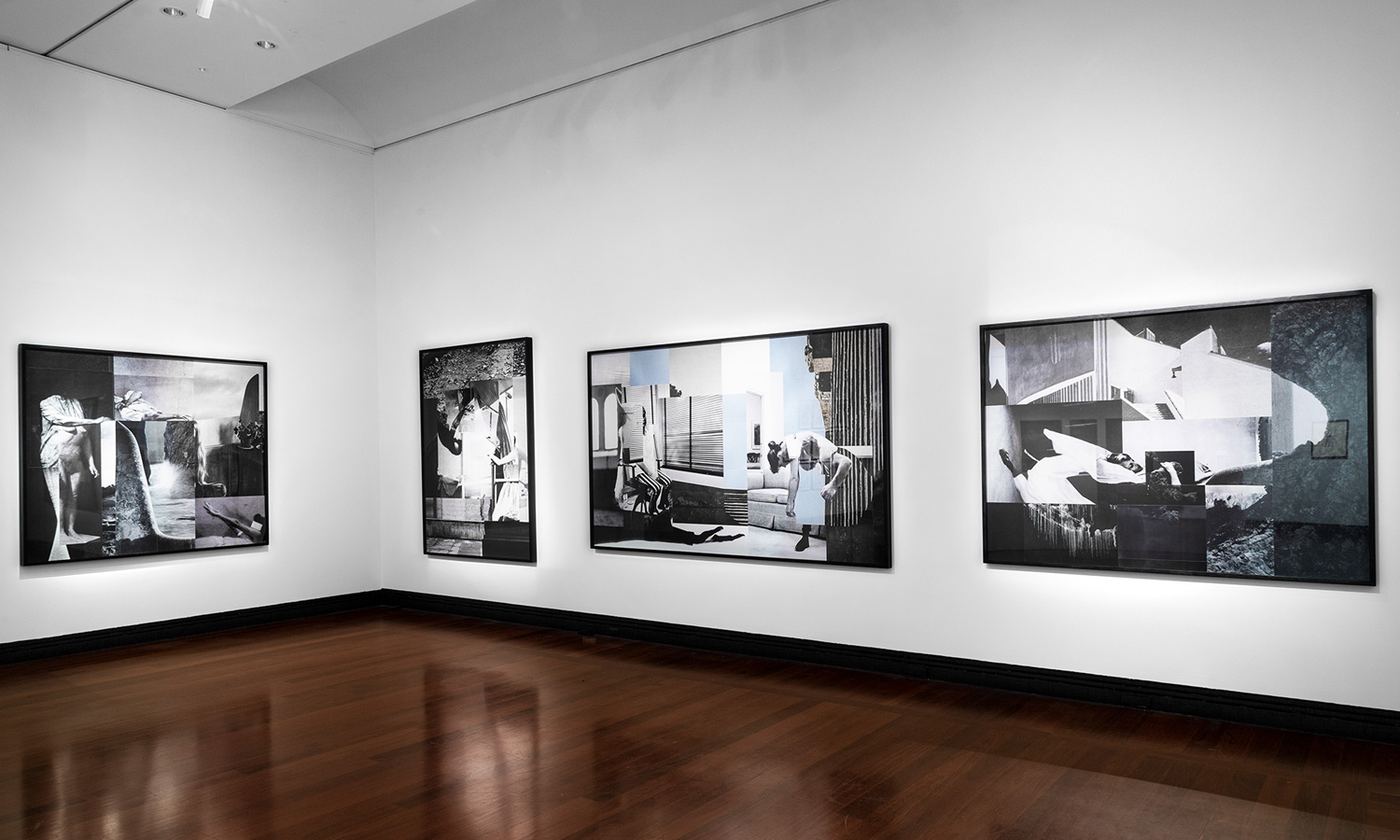
Adelaide Biennial of Australian Art: Inner Sanctum installation view, featuring works by Lillian O’Neil. Photo: Saul Steed
There is synthetic sadness in James Barth’s farewell to her avatar which suggests a looming absence rather than the sweetness of solitude. The late Peter Maloney’s last paintings shriek defiance in the face of suffering and fading mortality. Perhaps raging at the closing of the day drowns out the clamouring voices and allows self conversation to continue. There is no sanctuary on offer in Maloney’s Depth of My Soul. It has been described as resembling a dying star.
Even Heather B Swann’s menagerie of dream dwellers, Last night on Earth, despite their initial whimsical appeal, begin to weigh in on the imagination the longer the time spent in their company. The catalogue essay prompts suggest that the work’s title “speaks to the resolution of the inner mind, to resolving outstanding issues, to preparing for a dignified exit”. In this context, these weird life forms, a seesaw or headless rocking horse and floating figure, look like the kind of phantoms that appear when reason takes a nap. Ambiguity again – the prospect of a quietus promising peace but spawning monsters.

Adelaide Biennial of Australian Art: Inner Sanctum installation view, featuring works by Heather B Swann. Photo: Saul Steed
At some point, despite the best of intentions, Da Silva’s elegantly constructed theme with all its subsets needs to be set aside if only because of the slippage between the artwork and the backstories in the elegantly designed catalogue that comprehensively “explain” what each artist set out to do and what a work means.
To engage, for example with Ruha Fifita’s Ko e Mataliki ‘o e Mo’ui – a large mulberry tree bark tapestry inscribed with rich patterning – could involve reading about any number of aspects such as referencing central beams in traditional Tongan thatch-roofed structure, how belief systems within a family have shifted over time and influenced patterns of behaviour and thought, the interconnectedness of the natural world, and so on. There will be time enough to read this later. What matters with a large and multi-faceted exhibition like this is to look hard at as many individual works as possible with the intention of remembering what they looked like and what you thought at the time. Then, focus on the disposition of works.
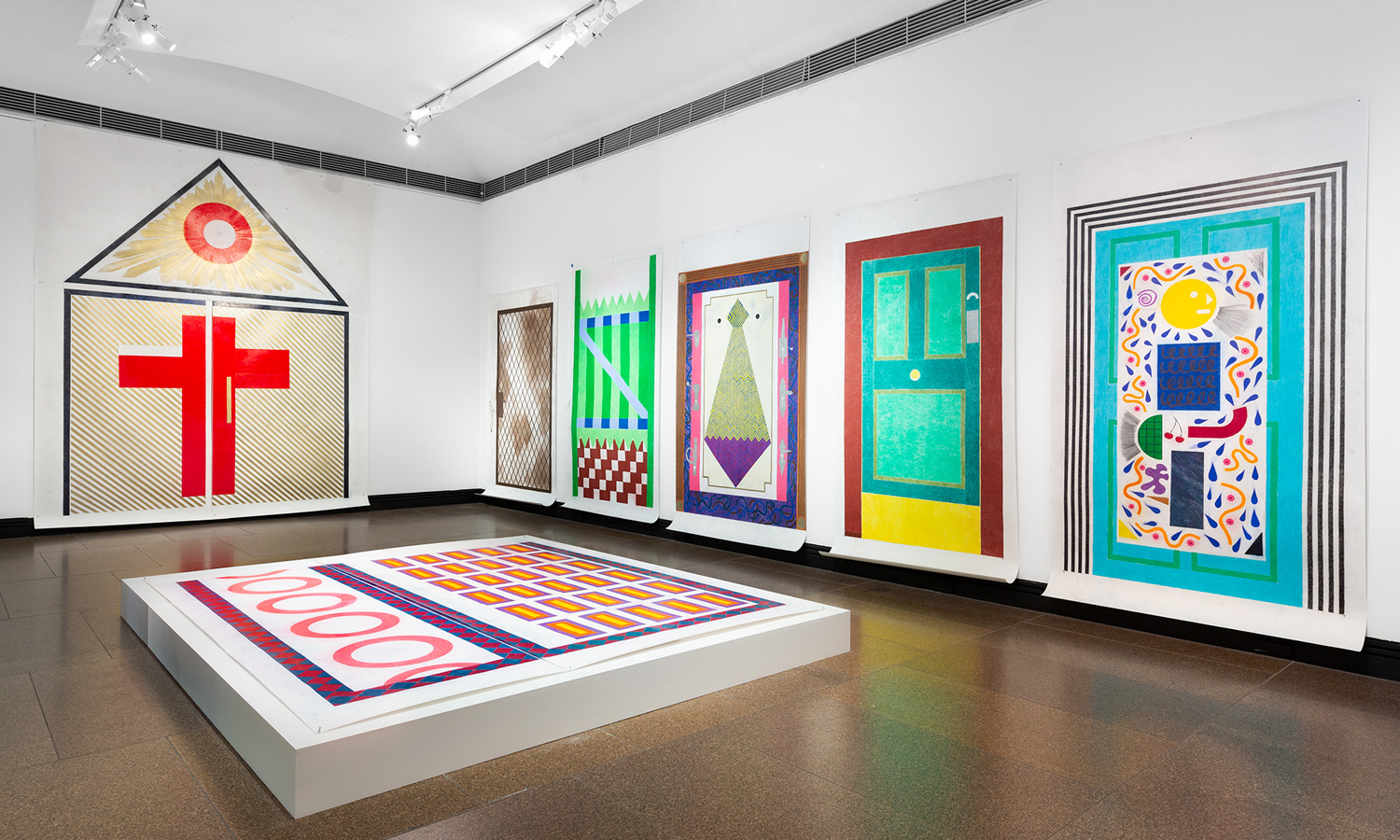
Adelaide Biennial of Australian Art: Inner Sanctum installation view, featuring works by Nik Pantazopoulos. Photo: Saul Steed
The River Path module (the third of the five “parts” or groupings of works within the Biennial) is a good place to start as it demonstrates the effectiveness of “bookending”, with Nik Pantazopoulos’s drawings of doors at one end and Khaled Sabsabi’s installation Knowing Beyond at the other. One speaks of creating symbols from within and the other of interpreting from without.

Get InReview in your inbox – free each Saturday. Local arts and culture – covered.
Thanks for signing up to the InReview newsletter.
If in search of a happy place, look no further than Christopher Bassi’s commanding painting Meeting a Mangrove (pictured top), which imagines a moment of contact between the artist and his totem, a red mango. It’s a very accessible point of entry to learning about the journey made by people, like Bassi, of diverse ancestral origins in consolidating cultural identity.
Equally powerful is Marikit Santiago’s Sa Simula (In the Beginning), depicting the artist’s family as ancient Tagalog gods and goddesses accompanied by Greek and Roman mythological inflections. To be told that that Santiago’s retelling of this particular origin story casts her family as agents of both creation and destruction is reason to spend a long time looking at and reading about this complex inner sanctum.
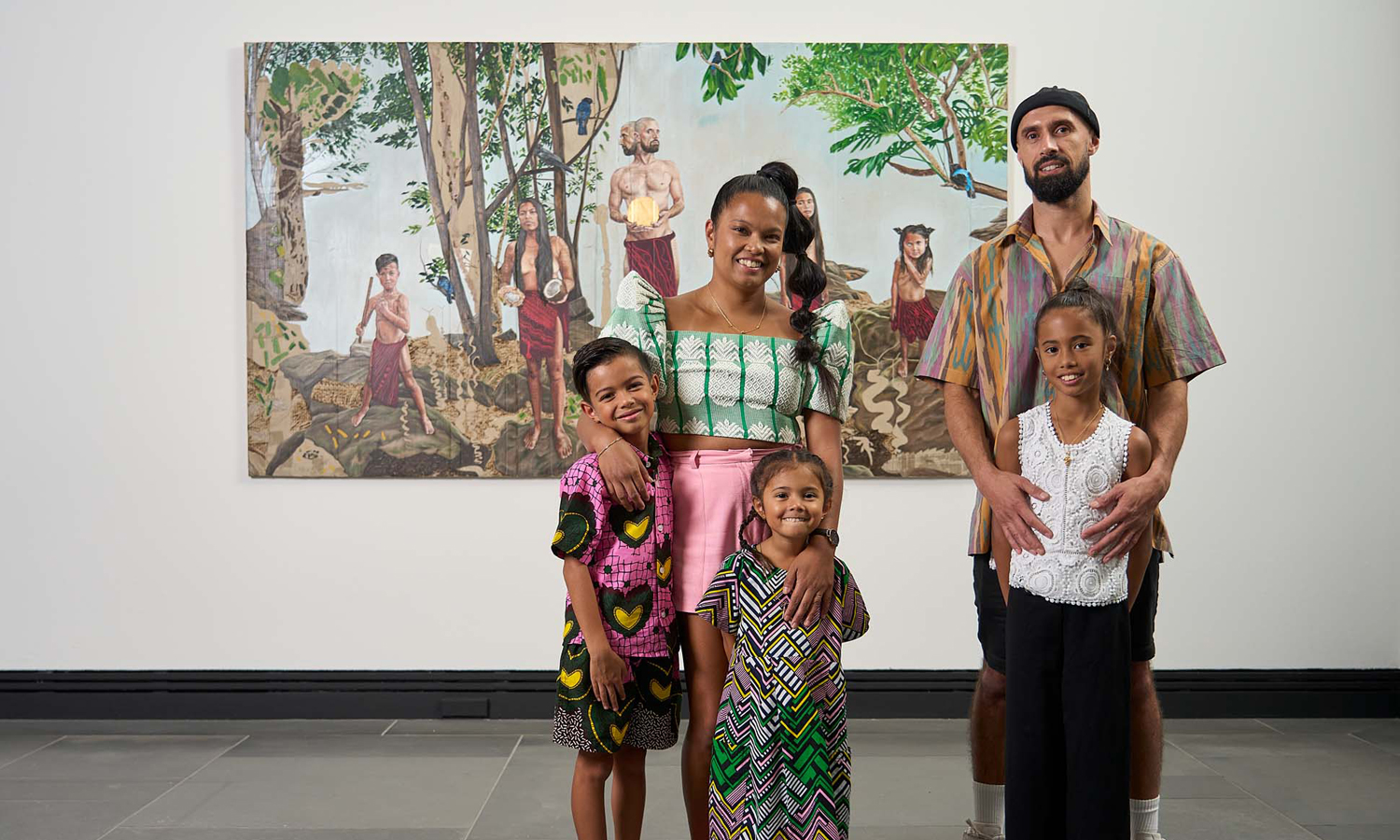
Marikit Santiago and her family with her work, Sa Simula (In the Beginning), in the Adelaide Biennial of Australian Art: Inner Sanctum at AGSA. Photo: Sam Roberts
The Adelaide Biennial of Australian Art: Inner Sanctum is at the Art Gallery of SA until June 2.
Support local arts journalism
Your support will help us continue the important work of InReview in publishing free professional journalism that celebrates, interrogates and amplifies arts and culture in South Australia.
Donate Here
